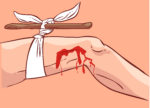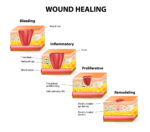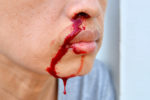If you do not have a commercial tourniquet, you can create improvised tourniquets using something flexible such as a triangular bandage, a scarf or a necktie. However, you should not use a thin flexible material such as a shoelace, string or a wire. If you were to use something like this, you may end up […]




